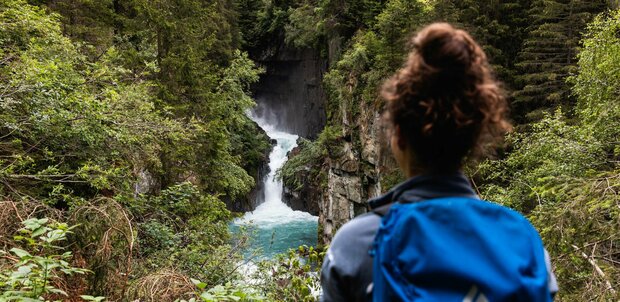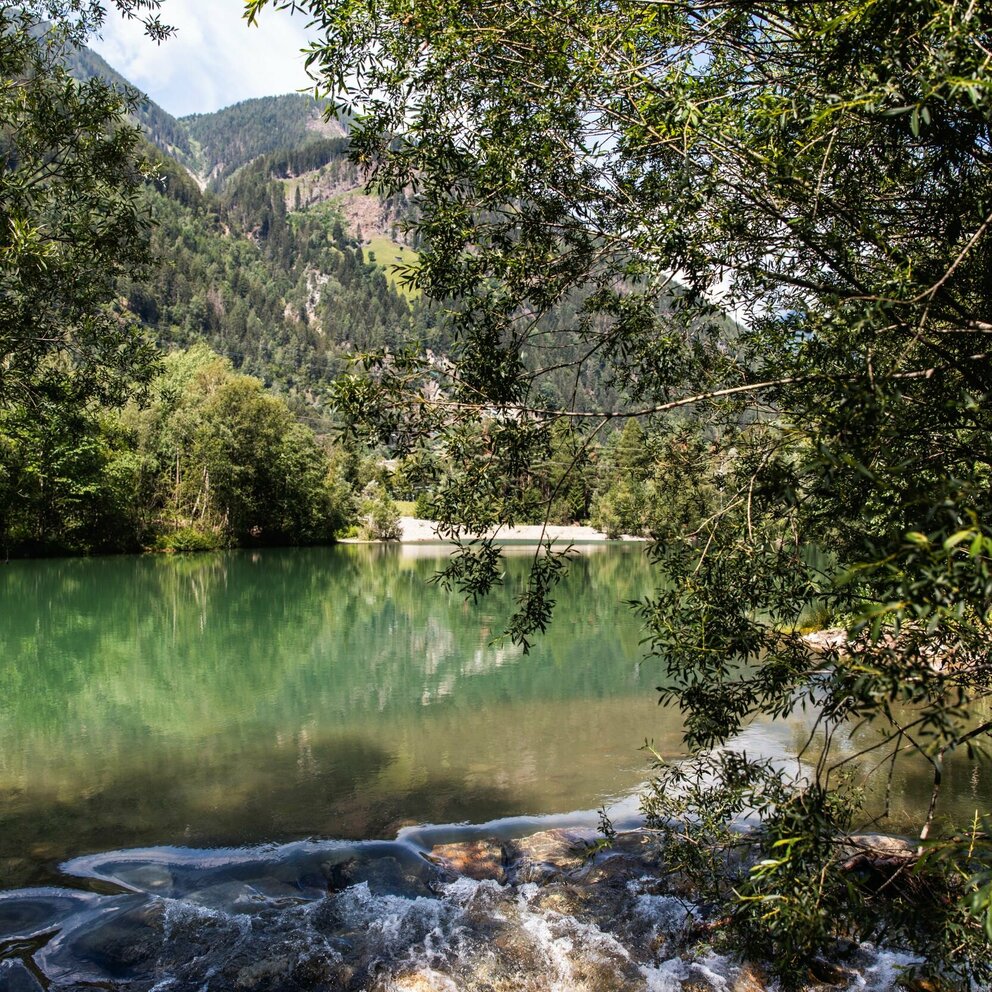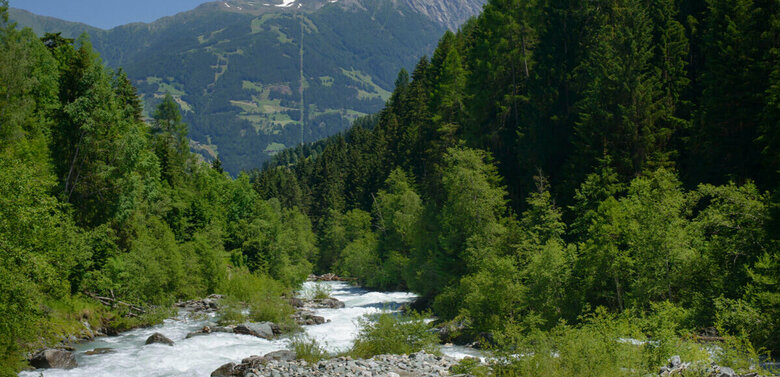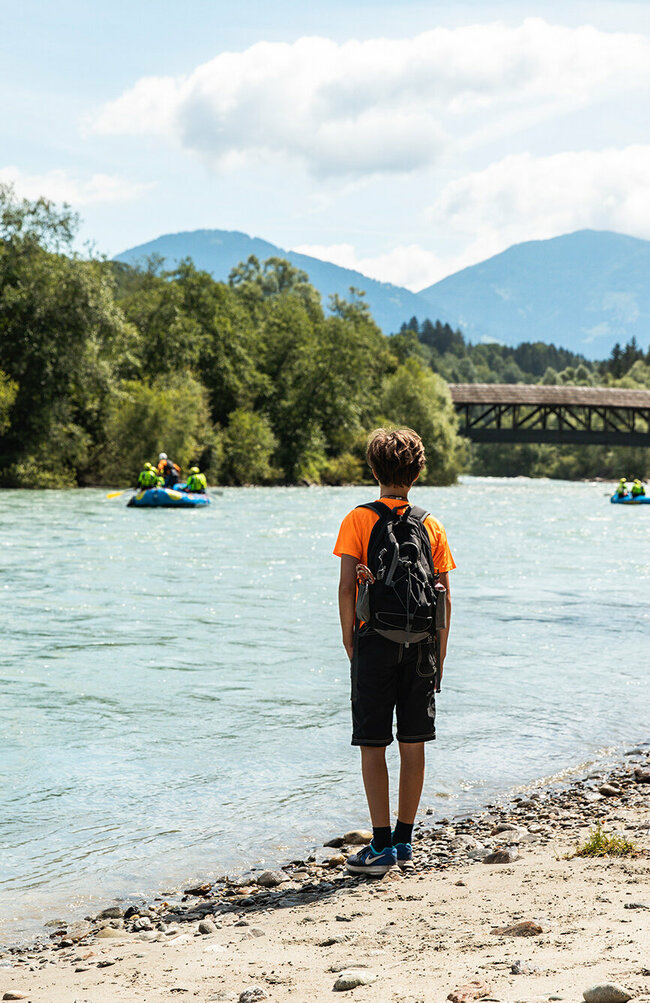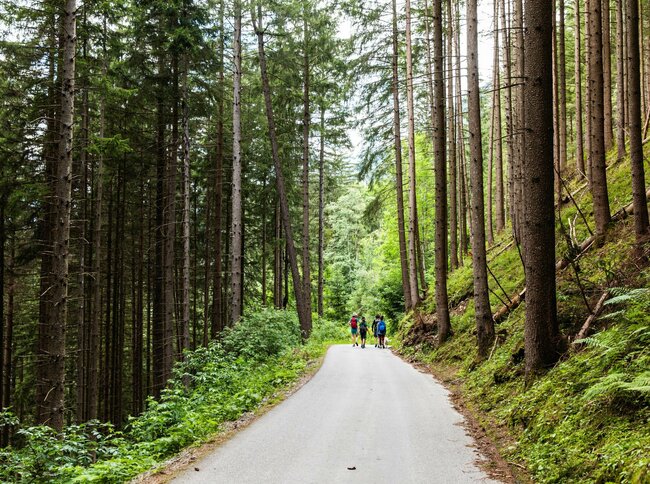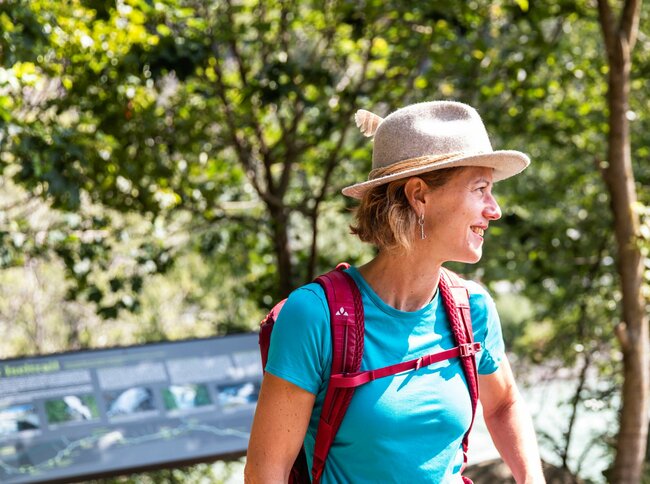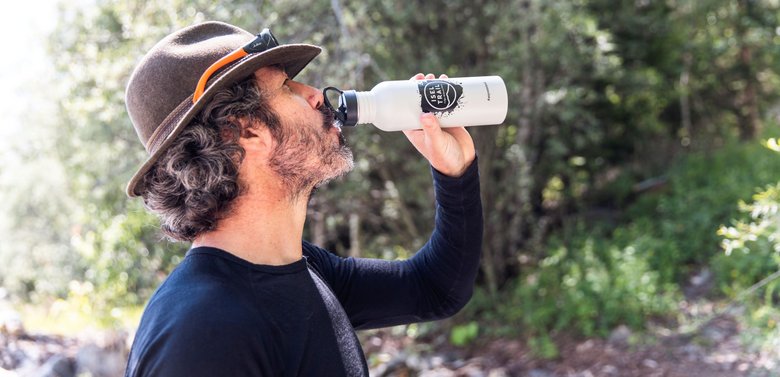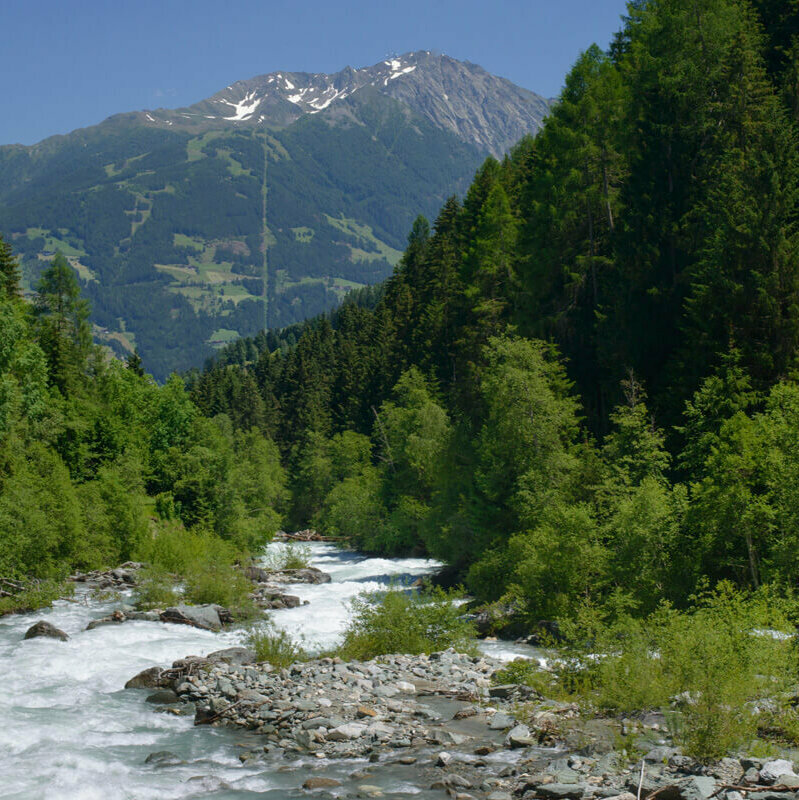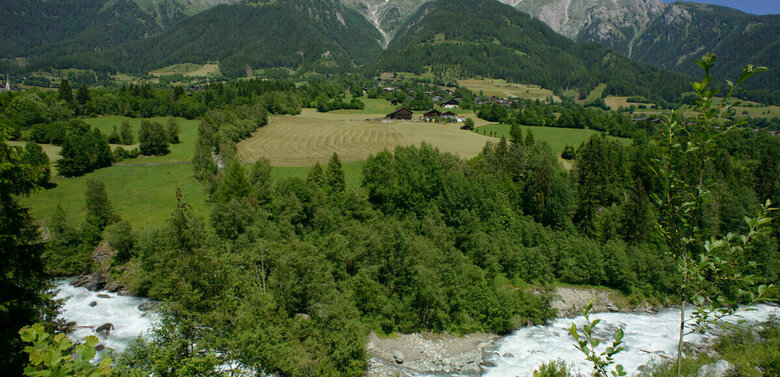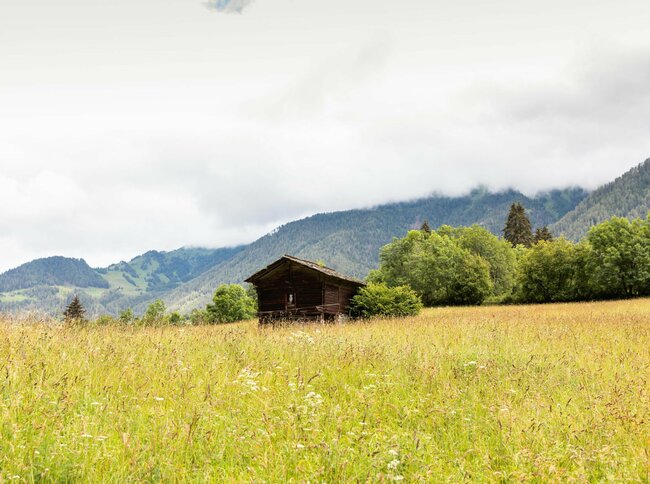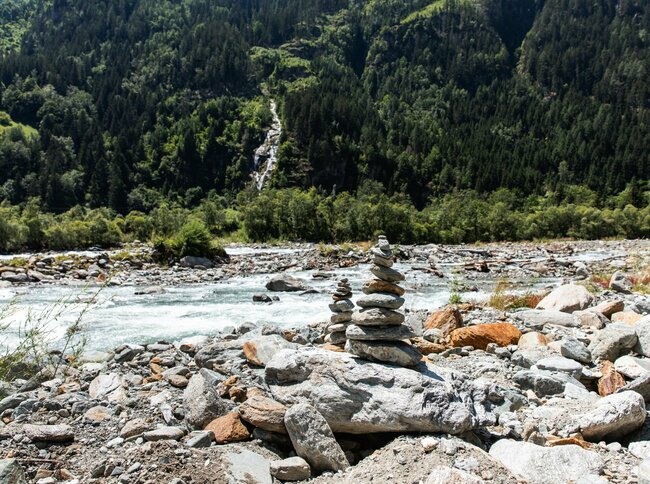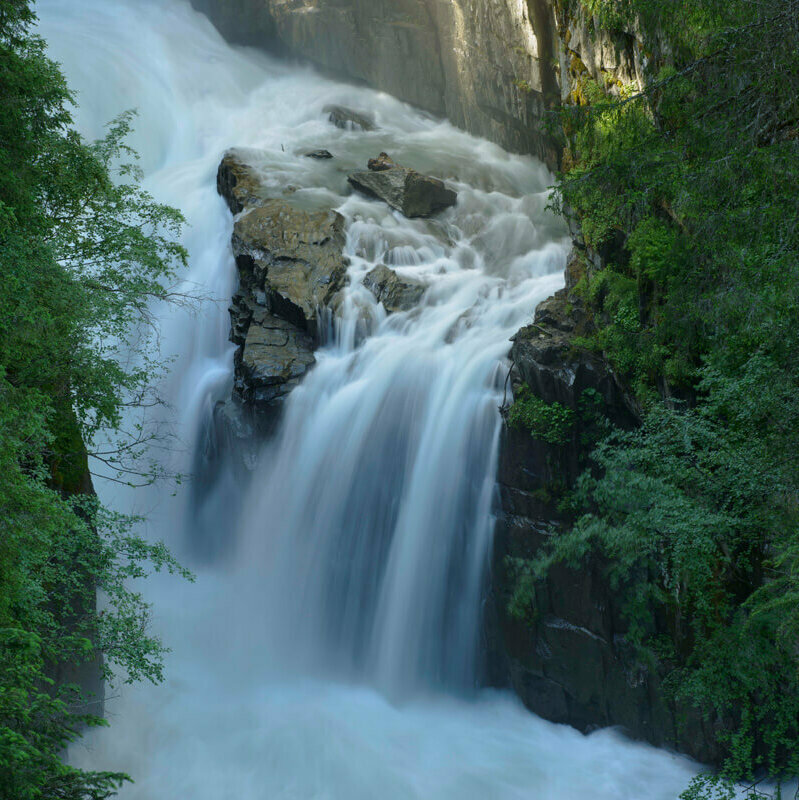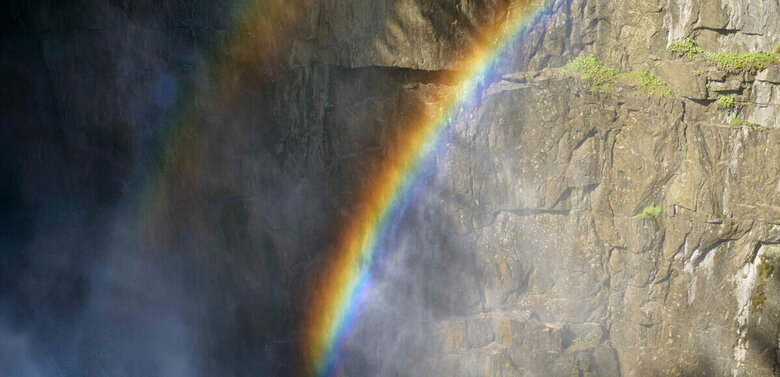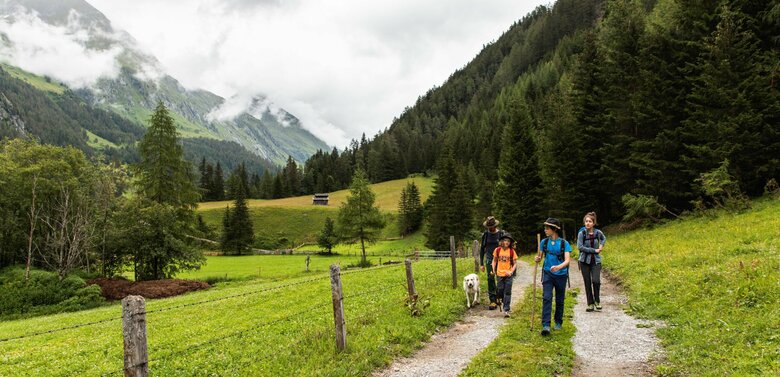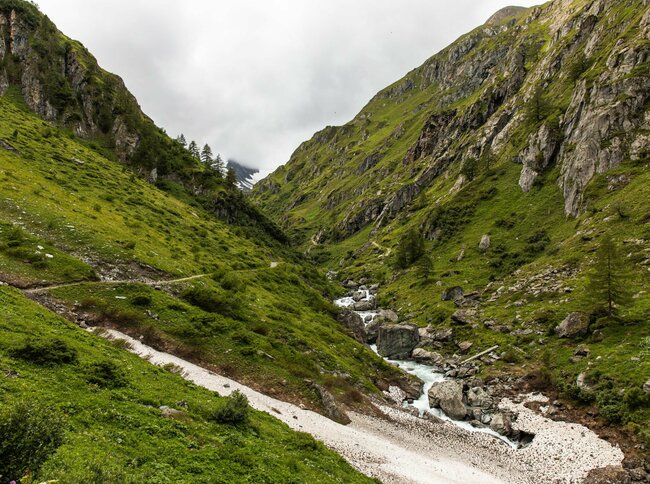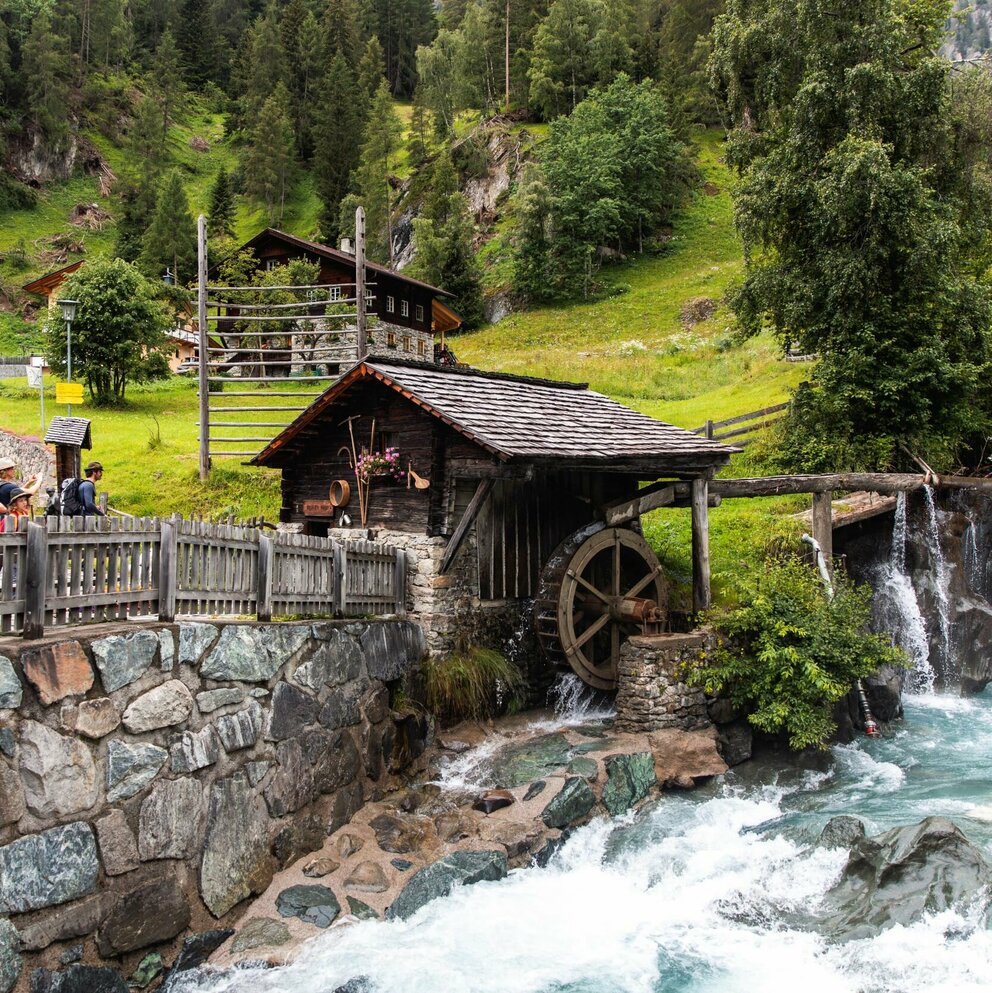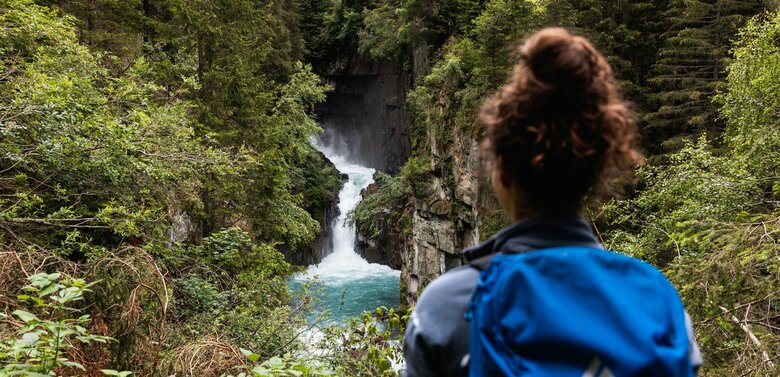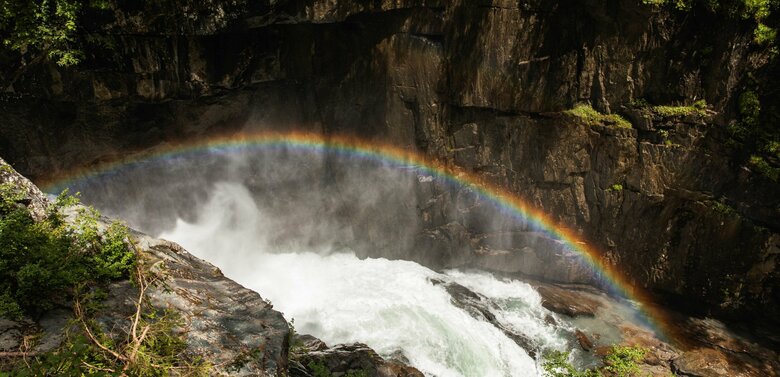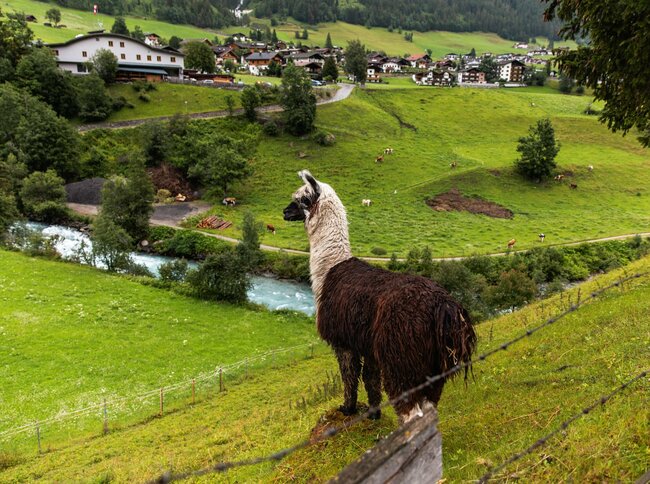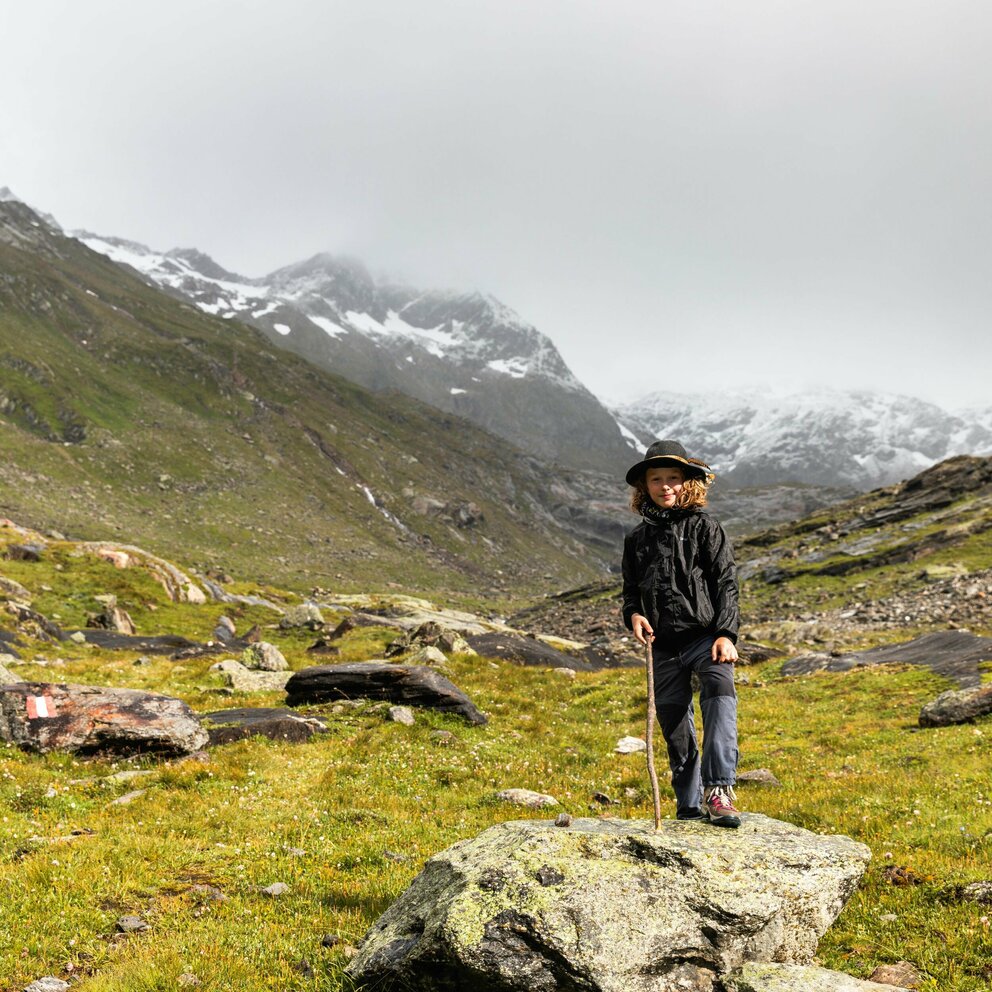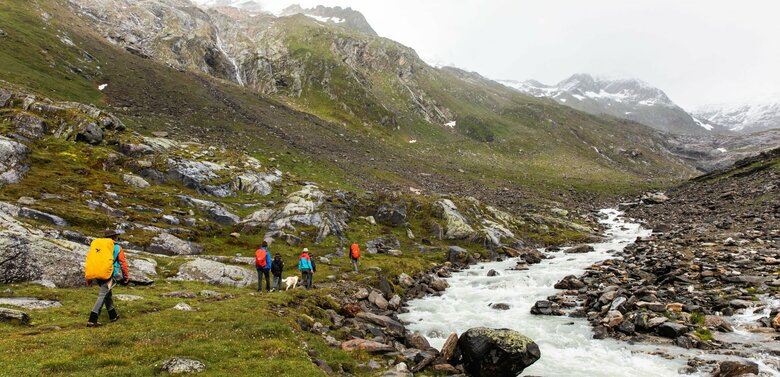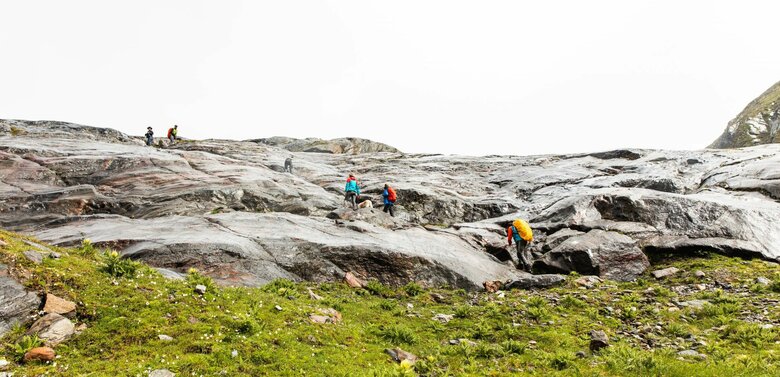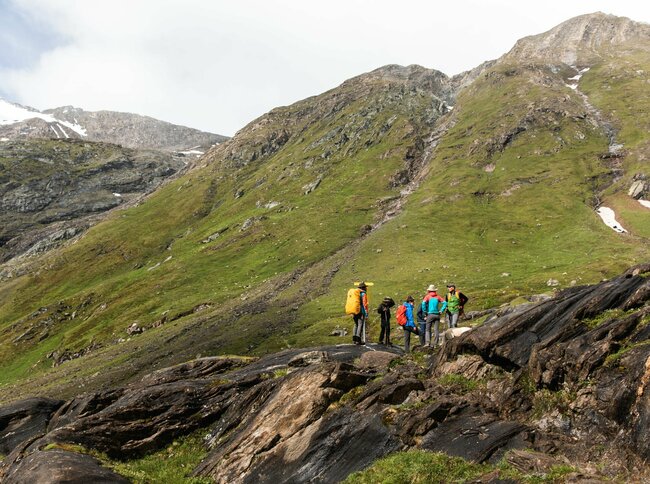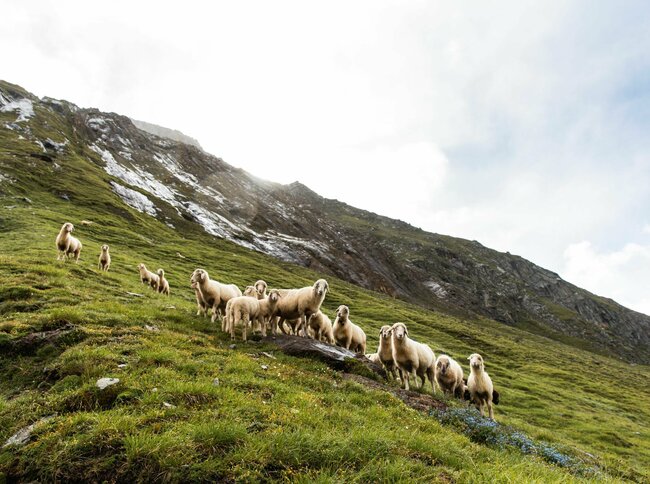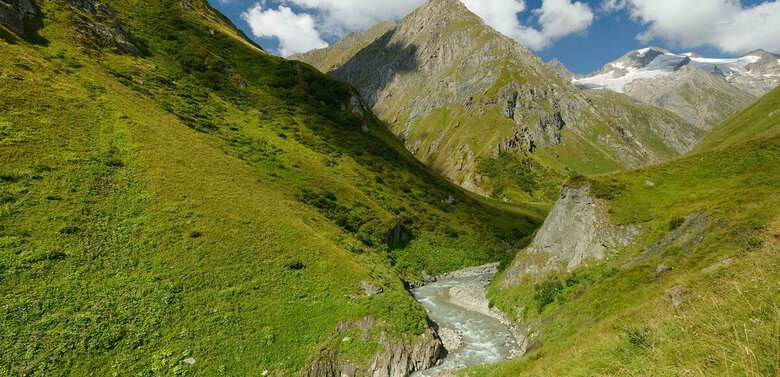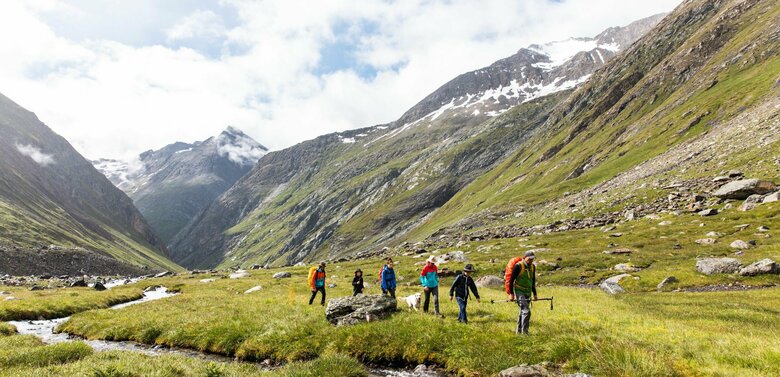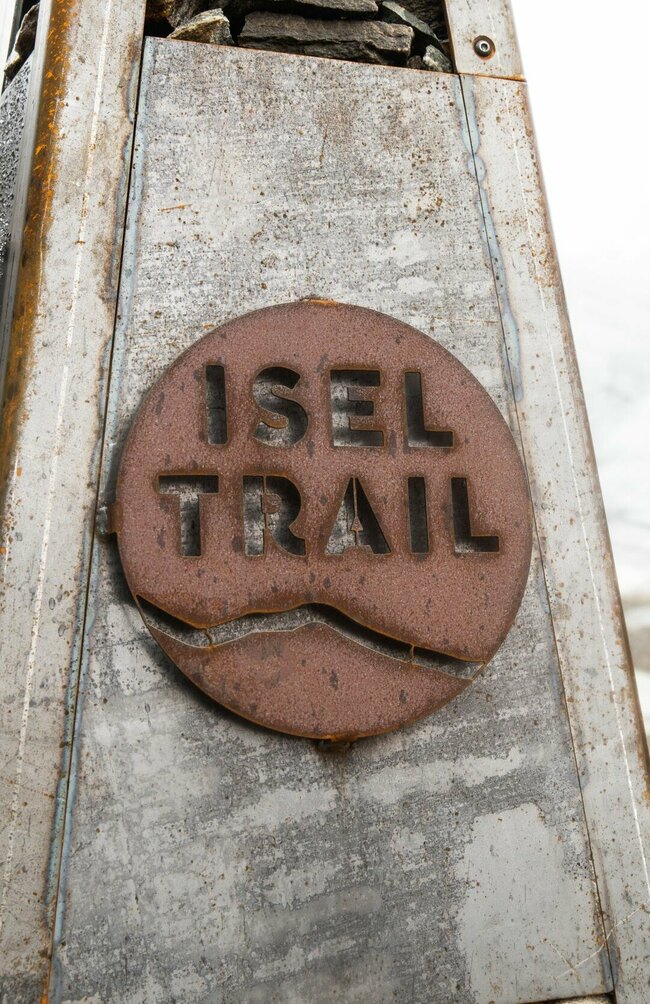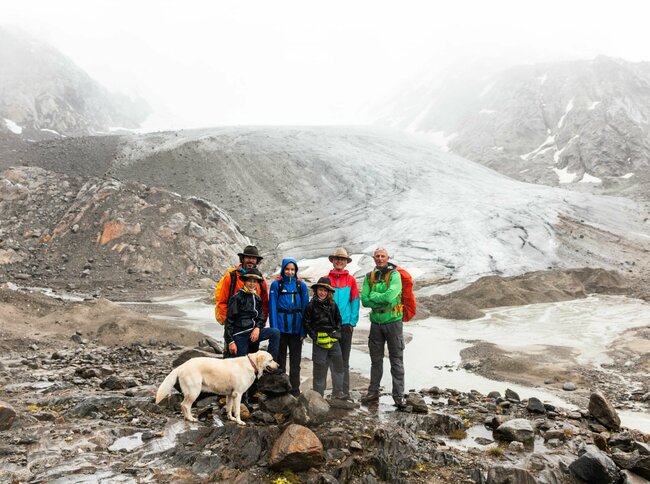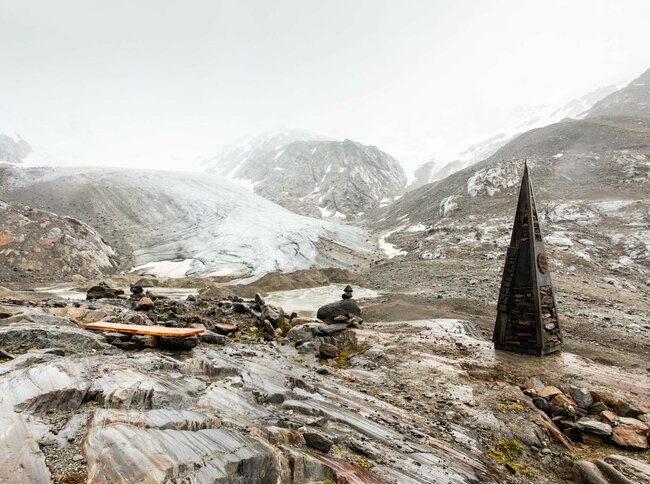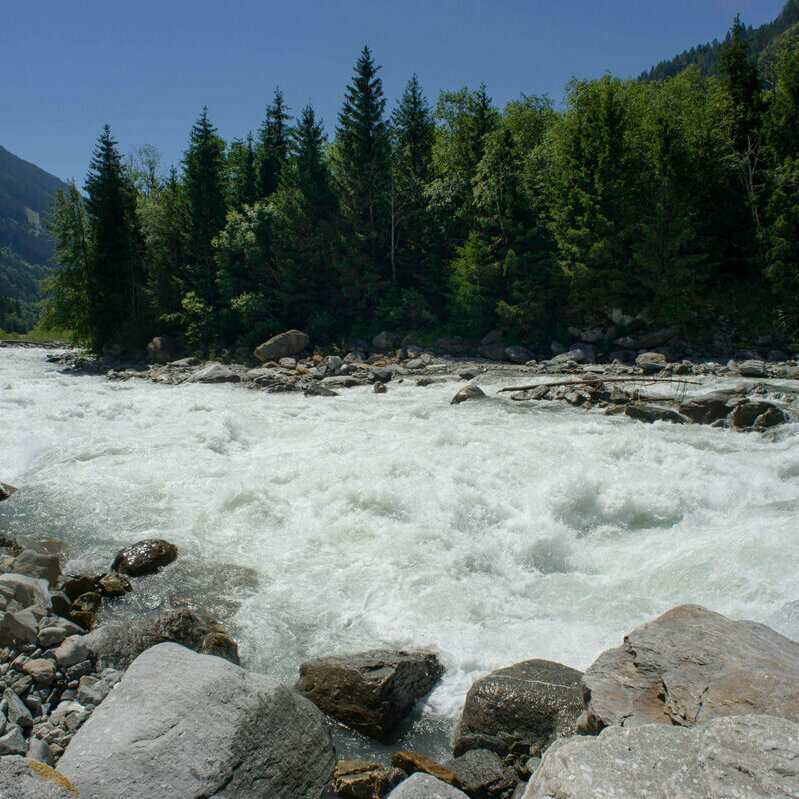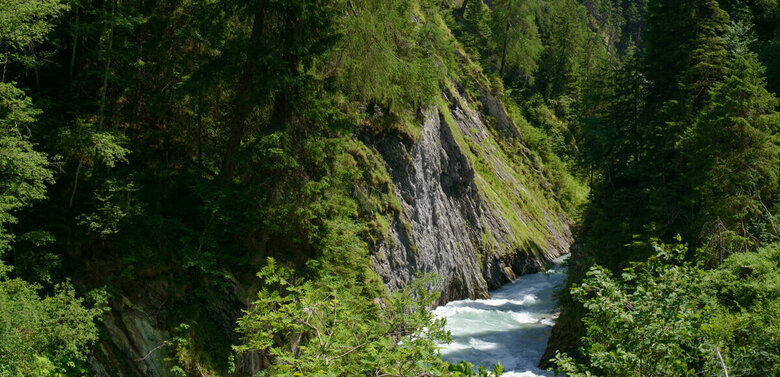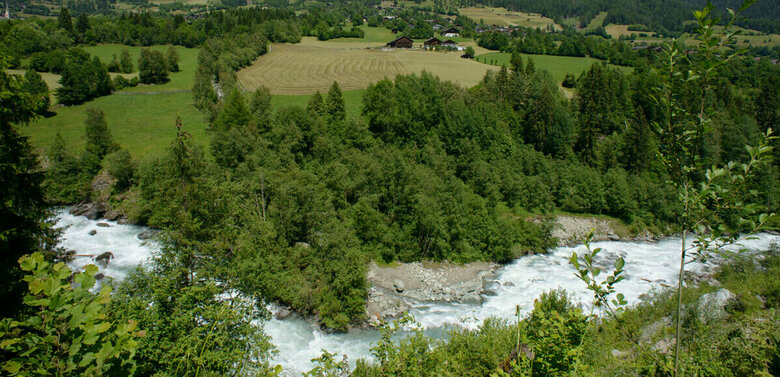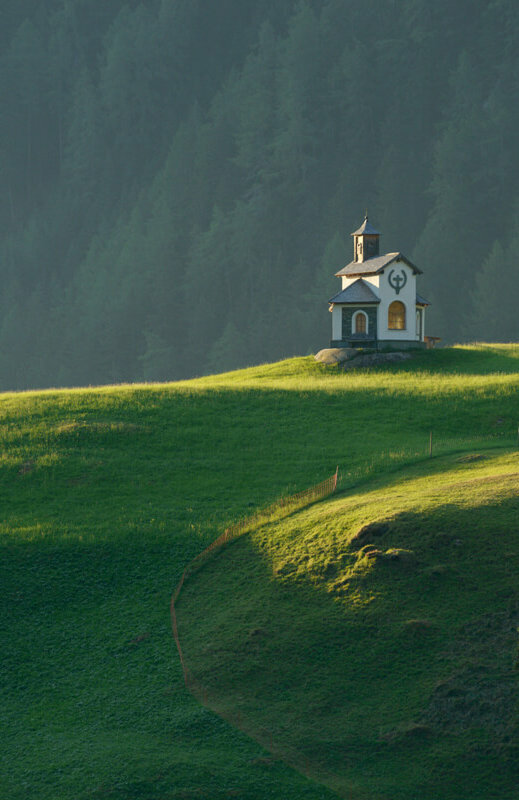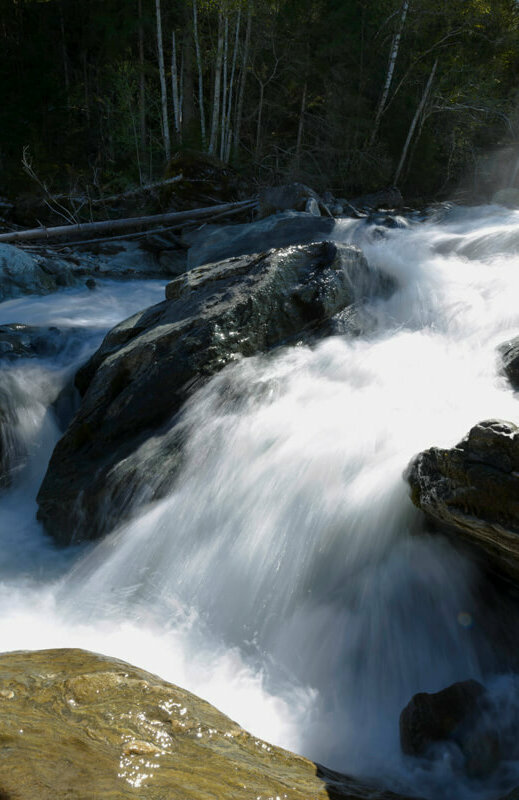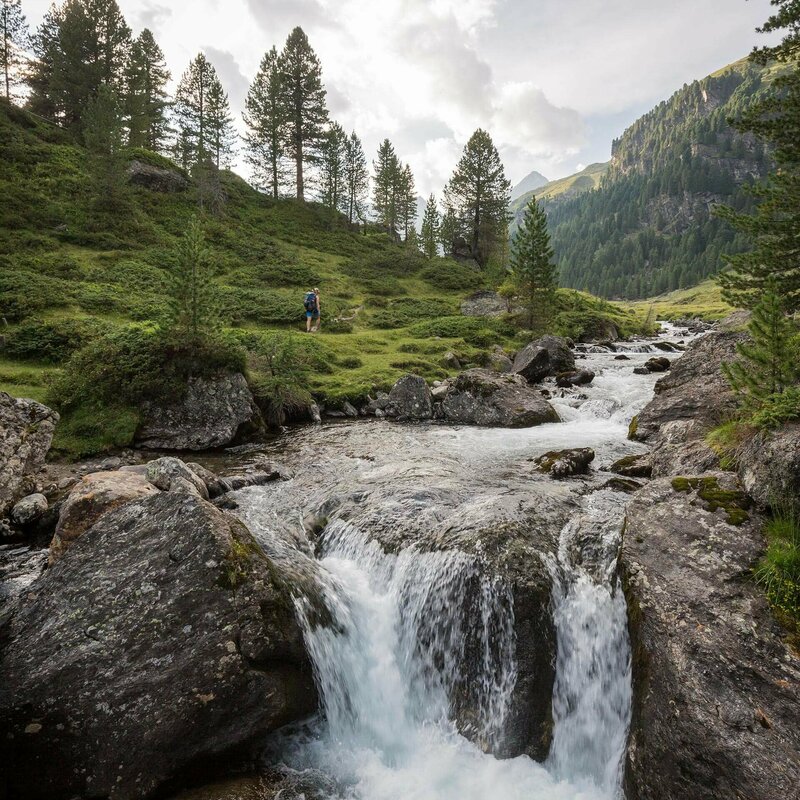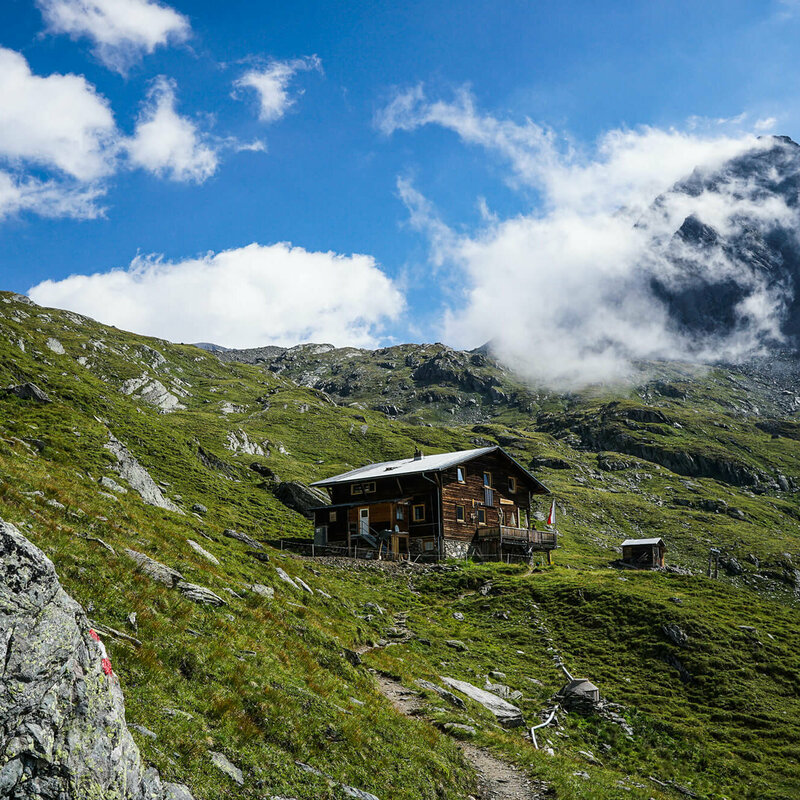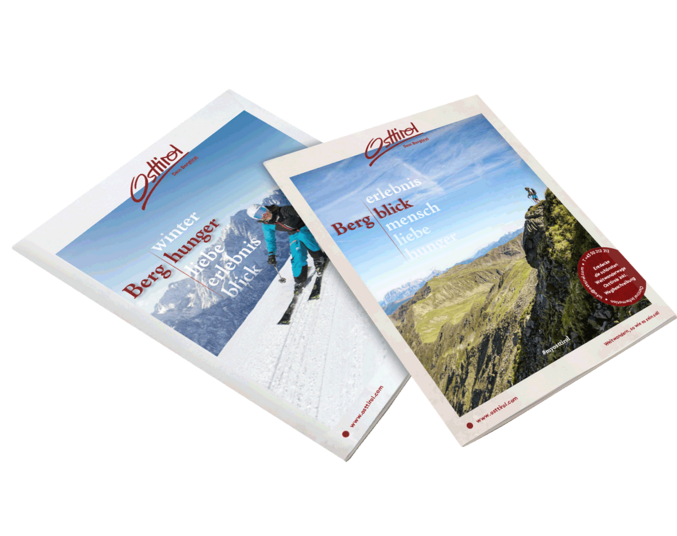The Source of the Isel at the Umbalkees:
At first, the Iseltrail runs across wide alpine grasslands full of flowers. A steep scarp, which was covered by the glacier just a few decades ago, marks the beginning of the arctic climate zone of Hohe Tauern National Park. The source of the Isel is finally reached at the ice front of the Umbalkees below the mighty Dreiherrenspitze (3499m) – the highlight of the hike. Here the Isel leaves the huge ice stream in a constantly changing glacier mouth and via Drava and Danube heads towards the Black Sea.
Born in the snow
Glaciers are a strange world of ice, rubble, insidious crevasses and at first frequently torrential streams, but also of gracefully intertwined sandars – sandy areas with islands in the glacier foreland that are constantly changed by the water. Glaciers are born in the cold: under metres of snow masses in the highest areas, pressure transforms the snow crystals into granular firn, which is gradually compressed to ice. Its enormous weight makes the ice slide downwards slowly. If enough ice is added quick enough from above, glaciers can reach down into the valleys.
Helpful water suppliers
No matter how threatening glaciers might appear, they also help people: In the upper glacier areas, the accumulation zone, they store water in the form of ice and release it again after many years in the ablation zone. Glaciers are gigantic water buffer storages that feed the rivers in summer with rain that fell in winter.
This melt water supplied by the glaciers guarantees plenty of water in many large Alpine rivers, even in summer. In hot, dry summers, when almost all of the winter snow on the mountains disappears, particularly much melt water accrues.
Glacial recession
Glaciers are therefore a kind of climate warning system: their recession is an indicator for global warming. The Umbalkees is also suffering from the climate crisis. The tongue of the Umbalkees has retreated by more than 700 metres since 1990 (glacial reports prepared by the OeAV/Austrian Alpine Association).
Climatologists assume that most glaciers in the Eastern Alps will have disappeared by the middle of the century. This does not only affect the beauty of the alpine mountains, it also has negative effects on the human world: if no melt water is supplied in summer, glacial rivers like the Isel will bring much less water into the lowlands. In addition, glaciers – together with the permafrost in the rock – stabilise the rock flanks. Slopes lose their stability due to the loss of glaciers, alpine dangers increase. And even the vegetation zones in the Alps are changing already: forests and alpine meadows are moving higher.
New, appealing setting
Due to climate change and the associated melting of the glaciers, a new landscape has formed and is still forming, which is also attractive in another way. The vegetation becomes barren, pioneer plants conquer inhospitable habitats of hardly earthy soil. The Iseltrail runs through this unique scenery to the glacier mouth, where the source of the Isel is located.


